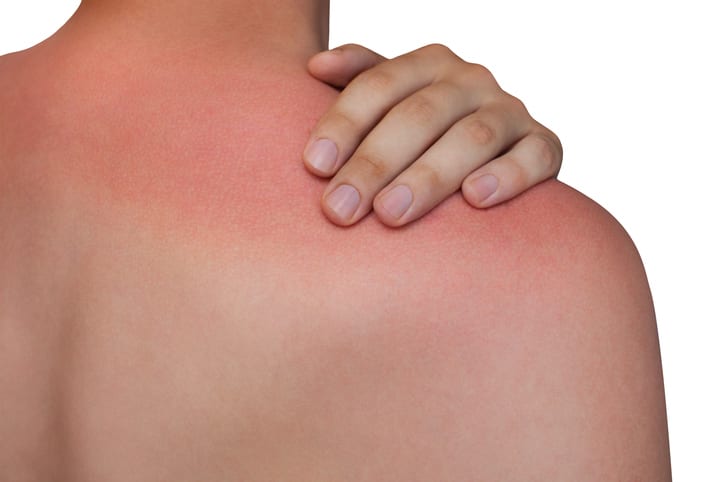Atypical Fibroxanthoma FAQs

What is atypical fibroxanthoma? »

When asking a person about the different types of skin cancer, you would be hard pressed to find anyone other than a dermatologist who put atypical fibroxanthoma on the list. Atypical fibroxanthoma is a type of skin cancer and is known for its dermal spindle-cell tumors. These occur on the head and neck generally on older people who have had a lot of sun damage.
The reason for its lack of being in the skin cancer conversation is that atypical fibroxanthoma is quite rare, accounting for less than 0.2% of all skin cancers. Plus, it is generally benign.
The development of atypical fibroxanthoma is associated with aging, long-term ultraviolet radiation exposure from the sun, and frequent x-ray radiation. Both forms of radiation can cause the abnormal growth of atypical spindle cells.
What are the demographics of people who get atypical Fibroxanthoma?
This rare form of skin cancer affects both sexes equally. It forms as a result of UV radiation or x-ray radiation. The mean age at diagnosis is 69 years.
An even more rare form of AFX occurs in younger patients on parts of the body that are not normally overexposed to the sun. There is also an increased incidence of AFX in patients with acquired immune deficiency syndrome (AIDS) and in patients who are immunosuppressed, for instance after organ transplantation.
How aggressive is Atypical Fibroxanthoma?»
This form of skin cancer is generally benign, although the tumors can be quite unsightly. Because it is a much less common, and familiar, form of skin cancer, atypical fibroxanthoma (AFX) can be misdiagnosed as other forms of skin cancer. This can lead to unnecessary extensive surgery and radiation. This can happen because AFX can arise rapidly, over just a few weeks or months, in skin in the areas common to all forms of skin cancer. While its growth rate is rapid, AFX is not overly aggressive.
What are the symptoms of atypical fibroxanthoma? »
Atypical fibroxanthoma lesions typically appear in areas that have received excessive sun exposure over the person’s lifetime. These are the usual areas — scalp, cheeks, nose, ears, back of the neck, and the shoulders. They can also occur in areas where the patient may have received radiotherapy treatment that may have damaged the skin. These are the characteristics of atypical fibroxanthoma lesions:
- Usually, these form a single tumor.
- These are red, juicy, dome-shaped nodules that can bleed, crust, or are ulcerated.
- Tumors start as small nodules but grow quickly over the next 6 months.
- Tumors can grow to the size of 2-3 centimeters.
- Occurrence is four times as likely on the head and neck as other body areas.
What causes atypical fibroxanthoma? »
Atypical fibroxanthoma is associated with prolonged years of sun exposure, aging, and possibly x-ray radiation exposure. Both UV radiation and x-ray radiation can cause abnormal growth of atypical spindle cells, which lead to these growths.
How is atypical fibroxanthoma treated? »
Treatment of atypical fibroxanthoma is complete surgical excision by a dermatologist. Small AFX lesions can be removed by curettage. Mohs micrographic surgery is becoming the preferred treatment for large or recurrent lesions because of its ability to remove the least amount of healthy tissue and its high success rates for complete, permanent removal.
The lesions grow quickly and can become about 2-3 centimeters in size. Because they occur on the head, face, neck, and shoulders, patients want to have them removed.
What is the cure rate for atypical fibroxanthoma? »
Atypical fibroxanthoma rarely recurs after complete excision with clear margins, making it virtually 100 percent cure rate. The key to not developing additional growths is to limit sun exposure to the areas of the head and back of the neck.
Is Mohs the Best Treatment Option for Atypical Fibroxanthoma?
More dermatologists are performing Mohs Micrographic Surgery on atypical fibroxanthoma tumors. While other treatment options are available, including curettage for small growths and standard excision for larger tumors, studies indicate that the chances of recurrence are nearly eliminated with the microsurgical technique. In addition to significantly decreasing the risk of recurrence, Mohs is the most tissue-sparing skin cancer treatment used today. This makes it ideal for atypical fibroxanthoma since these lesions usually develop on the head, face, neck, and shoulders.
What is the Outcome for Atypical Fibroxanthoma?
Like other skin cancers treated with Mohs surgery, atypical fibroxanthoma tumors rarely recur after excision with clear margins. Multiple studies have documented the outstanding results achieved through Mohs Micrographic Surgery in the treatment of AFX. For more direct information regarding your expected outcome, consult with a qualified Mohs surgeon in your area. Some factors, such as being immunocompromised, may affect the long-term expectations for treated patients.
Why Does Atypical Fibroxanthoma Occur in Immunocompromised People?
Studies have shown that a person’s immune capacity can influence their skin cancer risk and overall cancer risk. As it pertains to atypical fibroxanthoma, the research has identified immunocompromised people as high-risk patients for this type of skin cancer. Usually, the immune cells, called T cells, roam the body looking for anything that doesn’t belong. T cells regularly pick up pathogens, viruses, bacteria, and other threats. How do cancer cells seem to get by unscathed? First, they aren’t like the usual cells that the immune system targets. Cancer cells aren’t exceptionally foreign, they’re mutations of the cells that have been there all along. New studies are showing that cancer cells also have neoantigens, tiny protein fragments that may appear as tiny “nubs” on the surface of the mutated cells. When there is a low quantity of these protein fragments, the immune system may not register the cells as abnormal.
Being immunocompromised due to health conditions or medical treatment means that the immune system is weaker than it should be to effectively eliminate pathogens. In addition to being at risk of infections and other illnesses, the lack of adequate immunity diminishes the body’s ability to recognize cellular abnormalities via the detection of the neoantigens that characterize them.
Can Atypical Fibroxanthoma be Fatal?
Generally, atypical fibroxanthoma follows a benign route. However, it is imperative to receive an accurate diagnosis and treatment recommendation for this condition because, though rare, malignancies have developed from these lesions. Fortunately, current data suggest that proper excision of the AFX lesion offers a high cure rate.
FAQ
How Is Moh’s Surgery Performed?
Moh’s surgery is a surgical procedure designed to help get rid of skin cancer. It is usually performed in the office by a qualified dermatologist. How it works is that the surgeon scrapes off thin layers of the affected skin, places it under a microscope, and checks to see where the cancer is.
This process is repeated until the dermatologist is absolutely sure the cancer is gone. The amount of time it takes to complete this procedure depends on how severe the cancer is. It usually lasts about four hours, but it may also take an entire day. It is best to prepare yourself in advance by scheduling the entire day around the procedure in the event it takes longer.
How Long Does It Take to Recover From Moh’s Surgery?
It can take around 12 to 18 months to fully recover from Moh’s surgery, depending on the severity of the operation. During the recovery period, you can expect to visit your dermatologist to have the stitches removed after a week has passed. You are also expected not to do strenuous activities, such as heavy lifting and exercising, for two weeks.
Are There Any Complications When Recovering From Moh’s Surgery?
Yes, there can be complications. Being an invasive surgical procedure, you do have to worry about excessive bleeding, infections, swelling, pain, discomfort, and tenderness. These are common complications, and you must contact the doctor immediately if you experience any of them. There are other complications unique to Moh’s surgery, but they are rare.
These complications include the following:
- Experiencing temporary or permanent numbness in the treated area.
- Feeling a shooting pain in the treated area.
- Experiencing temporary or permanent weakness, which can occur if a muscle nerve is accidentally affected.
- The formation of a large, noticeable scar.
Start Your Treatment For Atypical Fibroxanthoma Today »
If you’re interested in learning more about atypical fibroxanthoma or would like to schedule your first treatment, please click the button below to find a Mohs Surgeon near you.


